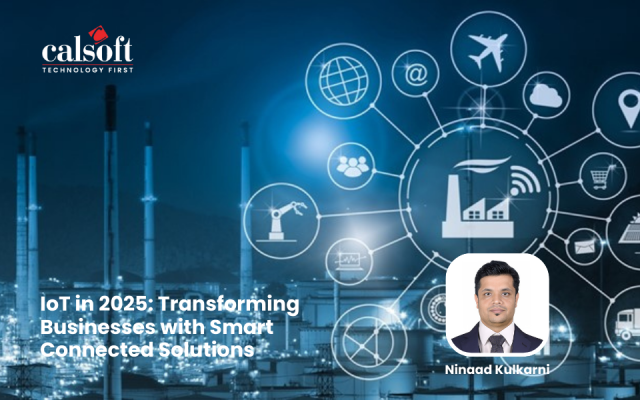The Internet of Things (IoT) is being adopted across industries and geographies -this is now much more than just a buzzword. Smart homes and connected cars are now real. With continuing technology advancement, it’s easy to see why the IoT market shows no sign of slowing. However, IoT may also be accused of being among the most ambiguous and least-understood technologies in recent times! Consider this post an attempt to clear the IoT air a bit.
Each day, more and more devices are getting connected to the Internet. They are waiting patiently for our command. So, how do we order them to do something for us? Which language do they speak? How do they communicate with each other?
A lot goes into building an IoT-solution: physical devices, communication channels and protocols, software, data, analytics, and more. For a start, let’s look at all the software that goes into making IoT solutions work:
- Software platforms: Every IoT-solution primarily runs on a software platform which manages the device as well as captures, processes, stores, and shares data with the required systems within the ecosystem. It also provides APIs that allow various apps to communicate with the IoT device. It is these APIs that act as the data interface and enable the IoT device to transmit data to the app. They also serve as the functional interface and allow the app to control the device. The type and capability of the software system depends on many factors. The number of devices the IoT solution needs to support, the volume and velocity of data that it would require to simultaneously process, the UI capabilities it would offer, integration with APIs, data sources, and proprietary systems, as well as where and how the platform will be implemented and maintained.
- Communication protocols: For all communication within the IoT ecosystem, the software platform uses a communication protocol that determines the source of data, understands the type, captures it, and then sends it to the data processing engine. The software platform is usually highly scalable and supports a substantial volume, velocity, and variety of data from different devices; it also provides an adequate level of fault tolerance and ensures that every message is received and placed in the proper queue for processing.
- Data-processing software: Data-processing lies at the heart of any IoT-solution. Its primary function is to apply real-time or near real-time logic to an inbound message and invoke the corresponding action. Although a small amount of data processing occurs within the physical IoT device, owing to the small size and limited capability of microprocessors, a more powerful software is needed to process collated data from all sources within the ecosystem. The data processing software also usually offers an interface with external components such as gateways to send email or SMS alerts to a mobile device.
- Data storage software: Every IoT ecosystem comprises of a highly-diversified combination of devices. Each device has the potential to generate a high volume of data, each with a unique data schema. All this data is efficiently stored in a robust data storage system – most likely using big data technology – with various retention policies. While some systems process and discard data immediately, some retain it for a short time, and some others retain it indefinitely. Actionable insights can be gained by applying advanced analytics to the data that is stored for longer periods of time, allowing users to drive higher throughput.
- Software applications: The human interaction with the IoT system is offered by software applications, mainly through a User Interface. Since most IoT systems support a diverse set of users, applications are available either through web browsers or mobile apps. Depending on the type of the IoT solution, the software application is custom-built, and then uniquely configured. Security is a prime consideration for any software app; basic user authentication, authorization, and role-based feature access ensure that only authorized users have access to IoT data. However, IoT-solutions that are used for monitoring and control that need to display real-time alerts and messages do this through a low latency communication channel. This allows the server to push the alert to the client without waiting for the client to initiate the request.
- Analytics software: IoT systems are known to generate massive amounts of data. This creates the need for compelling analytics software that can analyze the data and unearth critical insights. Analytics platforms with modern data visualization capabilities offer simple graphical representations of data that make it easy to spot trends and take appropriate action. The more sophisticated solutions offer predictive analytics that can not only predict data related to the IoT device but also predict results based on the data captured by the device. Modern analytics platforms also offer real-time analytics, which is especially useful for Industrial IoT devices. Real-time analytics helps detect deviations from known usage patterns, generates alerts, and enables users to take appropriate action, thereby minimizing the cost and possible damage.
Build cutting edge IoT solutions
Modern IoT solutions communicate constantly with the digital world, producing data and insights previously thought impossible. With 31 billion connected devices to be available by 2020, it’s safe to say that IoT is here to stay. From a user point-of-view, IoT is only about the cutting-edge apps they use to interact with the “smart” device. However, from a developer’s point of view, an IoT solution goes far beyond the app. It encompasses a whole ecosystem of modern technologies that integrate together to offer an experience that transforms day-to-day life. To realize the full potential from IoT, it is critical you understand the underlying technology: the physical devices, communication channels and protocols, software, data, analytics and more. It’s only then that you will truly be able to devise an IoT-solution that is modern, cutting-edge, and super-functional.






